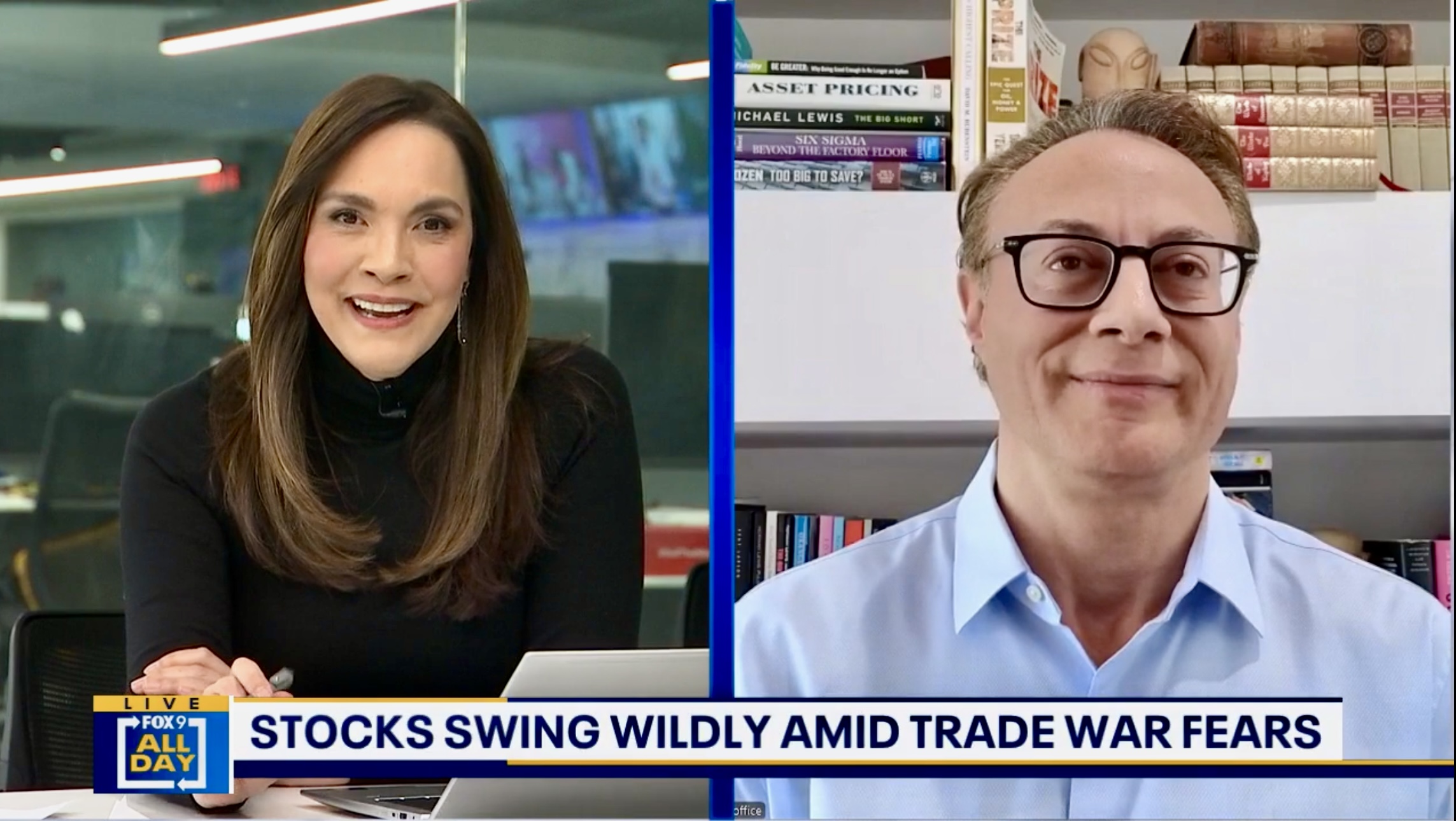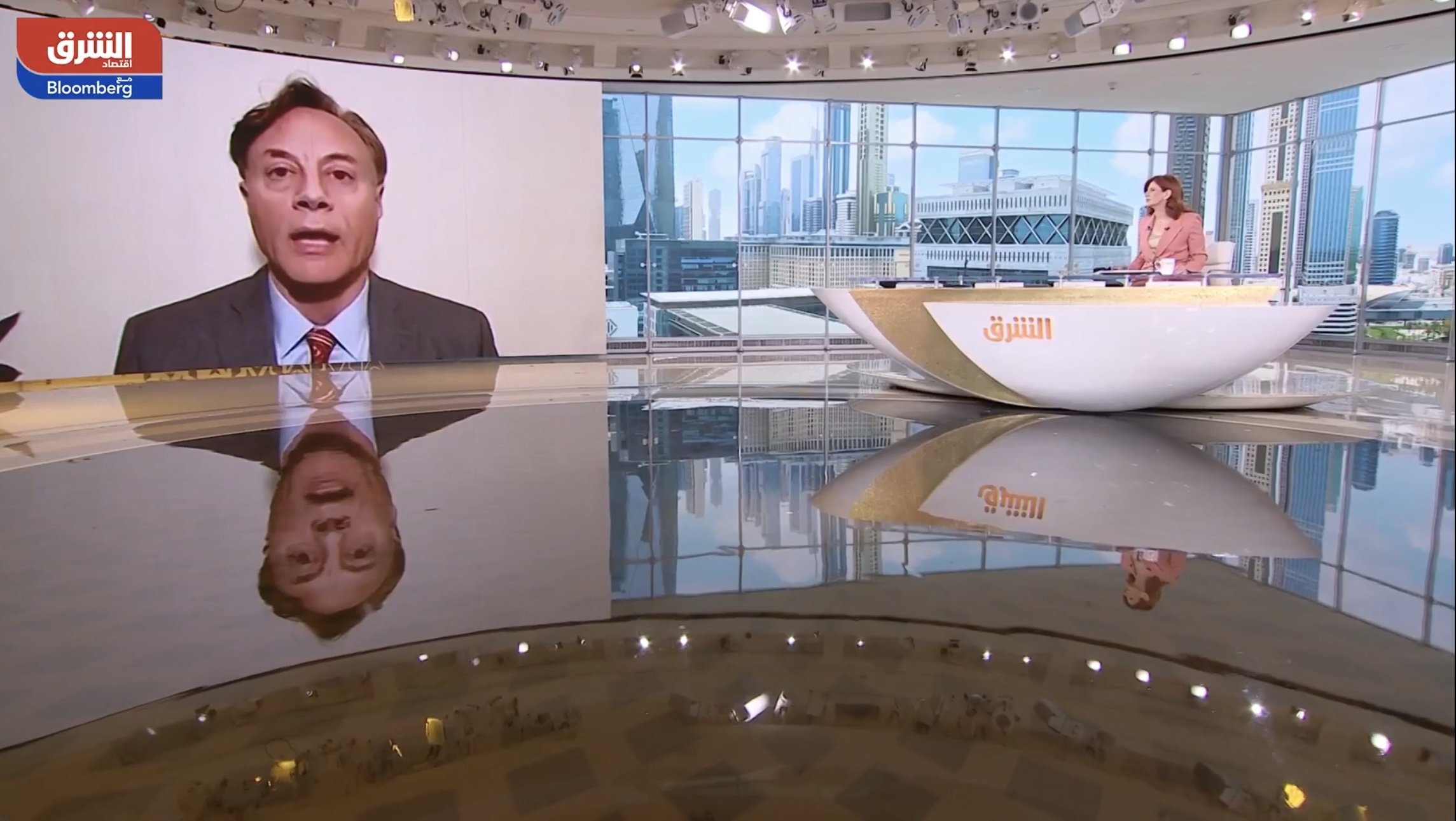I am pleased to reach out to you on behalf of all of us here at Running Point Capital Advisors and introduce myself as the chief investment officer. I wish it was during calmer times, but the investment markets are always interesting. I bought my first stocks when I was six years old and began managing bond and stocks professionally at age 21 for insurance companies, pension funds, corporations, and unions, so much like Jim, I too have navigated through numerous economic cycles and vacillations of market sentiment.
We know that an investment plan is not merely a good idea, it is a necessity. If you act panicked, you will be panicked. If you find yourself watching a Covid-19 infection stormmeter, your portfolio, or the Dow chart minute by minute, step away, take a deep breath, and focus on the big picture. Here is our take:
- The risks: Widespread and indiscriminate asset value declines, economic and social disruption, bear markets around the world, and the possibility that recession has already begun. We are in the midst of a simultaneous collapse of supply and demand, and the cash crunch that arises from that
- The opportunities: Distressed credit recapitalizations, rescue financing for real estate and first lien deals, and public companies significantly cheaper than recent highs that will resume their growth trajectories once this squall has passed
- The response: Governments will do whatever it takes, eventually! Monetary, fiscal, and regulatory policy need to create a credible response, ideally with monetary and fiscal stimulus in coordination with regulatory rules regarding health, pay, and sick leave
Overreaction to the shock will make the eventual recovery quicker. The lessons from the great financial crisis have not been lost: Government responses should be faster, larger, and greater.
To understand what comes next, realize that governments are usually in the business of staying in power, and that the first government solution is often not the best nor final government solution. To address this crisis, central banks and governments need to be aggressive relative to the problem (not just aggressive relative to history). Along these lines, the Fed dropped interest rates 1.5% in two quick moves, established unlimited quantitative easing (QE) – committing their balance sheet to buy Treasuries and mortgage backed securities on the open market – and set up programs to ensure credit flows to corporations and state and local governments. This will calm parts of the credit market and allow time to figure out how to give confidence to private transactions and private lending since banks are tapped out on their risk weighted assets. Additionally, congress and the administration are working on a $2 trillion fiscal stimulus to pay furloughed and sick workers as well as capitalize at risk industries like the airlines. Similarly, the U.K. will funnel up to $2,900 per month to laid off workers and the European Central Bank (ECB) launched an extra emergency bond-buying program worth $820 billion. “Extraordinary times require extraordinary action. There are no limits to our commitment to the euro,” ECB President Christine Lagarde said. Other central banks around the world are following suit. Governments are trying what they can to solve the crisis and cap the risks; much like during the great financial crisis, their responses won’t be immediately perfect, but the authorities will keep trying as they strive to remain in power and help their people.
China already shows signs of a swift demand rebound for everything from travel to manufacturing as the number of new cases there decline; infections are increasing at a much slower pace and factories are resuming operations. China’s economy suffered in the first quarter of 2020, but [if official numbers are believed] is already turning things around towards a second quarter recovery with fiscal, monetary, regulatory, and infrastructure stimulus. Recovery incentives will be strong with tax exemptions, lower monetary rates, and attractive lending packages to small and medium size businesses. Chinese officials have been proactive. We hope to follow a similar pattern in the U.S. and the rest of the world.
As happens when there is elevated fear and volatility, the markets have been disorderly. Here is the base case playbook:
- Over the next few weeks, volatility may decrease; nonetheless, don’t let large moves surprise you as uncertainty is always a given (especially now)
- Treasury yields may fall again as new corporate and municipal bond issuance slows to a trickle. Normal bank lending will also shrivel, as the economy declines and we see some defaults, as is inevitable in a downturn
- Government intervention from the Fed, Congress, and the Administration will soften the blow. Interest rate decreases, quantitative easing, support of the financial system, SBA loans, direct subsidies, payment forgiveness and moratoriums, shutdowns and lock downs will all help
- Slow global growth, weak spending, and supply side disruption will pressure manufacturing and services for a while, allowing distressed credit lending firms to ink attractive financing deals and bargain hunters to pick up equity cheap
- Cash positions will increase, and eventually a good portion of that cash will find its way into the markets
- Private equity and credit funds have over a trillion dollars of investor commitments they can use to buy and lend to distressed companies, thereby helping provide a price floor for assets
- An economic recovery could start in the late third or fourth quarter
- Stocks may bottom at the first sign of green shoots (), vaccination, or cure, at which point, treasury yields will probably rise
- Once we see Covid-19 cases plateau, a more confident health care response, and additional targeted monetary and fiscal stimulus, expect buyers to return to take advantage of price dislocations and attractive corporate and municipal yields
Longer term, the nature of supply chains may change. Robots don’t spread biological viruses, thus there should be a further shift towards automation, software optimization, and 3-D printing. Of course, there is room for things to turn out better than this base case; and likewise, our sympathies are with those more directly affected.
Overall, fears seem to be higher than in 2008 because the virus creates a more dire end case. Economically, however, we have entered this economic squall from a much stronger base of positive economic growth, low unemployment, and less leverage. Additionally, panic mode is creating targeted investment opportunities as well as a proactive wave of caution that could quash the virus sooner than otherwise. Recovery will occur as the virus subsides, a cure/vaccine is created, or we learn to live with it, and governments step in with monetary, fiscal, and regulatory relief for businesses and families.
Looking forward, almost every company will become a virtual company with some combination of improved online communications, video conferencing, remote ordering, and direct to customer, home, or business touch points (thus utilization of the cloud, automation, and robotics will increase) and there may be a Covid baby boom in nine months.
Sincerely yours,
Michael Ashley Schulman, CFA,
Partner, Chief Investment Officer
Disclosure: The opinions expressed herein are those of Running Point Capital Advisors, LLC (“Running Point”) and are subject to change without notice. Running Point reserves the right to modify its current investment strategies and techniques based on changing market dynamics or client needs. This should not be considered investment advice or an offer to sell any product. Running Point is an independent investment adviser registered under the Investment Advisers Act of 1940, as amended. Registration does not imply a certain level of skill or training. More information about Running Point, including our investment strategies, fees and objectives can be found in our ADV Part 2, which is available upon request. RP-20-02


